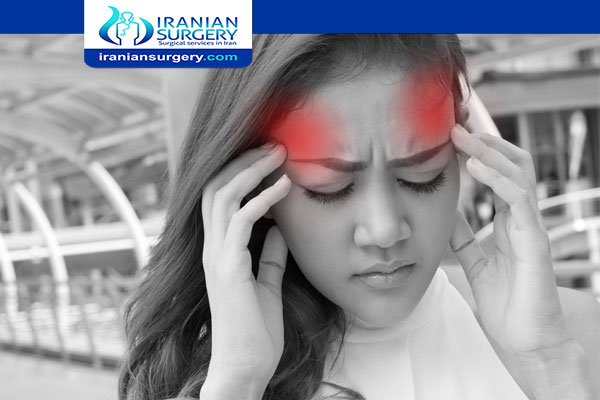Arachnoid cyst size chart

Arachnoid cyst size chart
what is considered a large arachnoid cyst?
Arachnoid cysts are cerebrospinal fluid covered by arachnoid cells and collagen that may develop between the surface of the brain and the cranial base or on the arachnoid membrane, one of the three meningeal layers that cover the brain and the spinal cord.
We retrospectively reviewed the electronic medical records of a consecutive series of adults who underwent brain MRI over a 12-year interval to identify those with arachnoid cysts. The MRI studies were reviewed to confirm the diagnosis. For those patients with arachnoid cysts, we evaluated presenting symptoms, cyst size, and cyst location. Patients with more than 6 months' clinical and imaging follow-up were included in a natural history analysis.
Read more about : Arachnoid cyst treatment without surgery
Read more about : Mastoidectomy procedure
Read more about Do arachnoid cysts require surgery?
Read more about Ovarian cyst size chart
Read more about Breast reduction size chart
Read more about Stages of fissure healing
Read more about Endoscopic Brain Surgery
Read more about What we can do for you in Iranian surgery?
Arachnoid cysts are cerebrospinal fluid-filled sacs that are located between the brain or spinal cord and the arachnoid membrane, one of the three membranes that cover the brain and spinal cord. Primary arachnoid cysts are present at birth and are the result of developmental abnormalities in the brain and spinal cord that arise during the early weeks of gestation. Secondary arachnoid cysts are not as common as primary cysts and develop as a result of head injury, meningitis, or tumors, or as a complication of brain surgery.
The majority of arachnoid cysts form outside the temporal lobe of the brain in an area of the skull known as the middle cranial fossa. Arachnoid cysts involving the spinal cord are rarer. The location and size of the cyst determine the symptoms and when those symptoms begin. Most individuals with arachnoid cysts develop symptoms before the age of 20, and especially during the first year of life, but some people with arachnoid cysts never have symptoms. Males are four times more likely to have arachnoid cysts than females.
A total of 48,417 patients underwent brain MRI over the study period. Arachnoid cysts were identified in 661 patients (1.4%). Men had a higher prevalence than women (p < 0.0001). Multiple arachnoid cysts occurred in 30 patients. The most common locations were middle fossa (34%), retro cerebellar (33%), and convexity (14%). Middle fossa cysts were predominantly left-sided (70%, p < 0.001). Thirty-five patients were considered symptomatic and 24 underwent surgical treatment. Sellar and suprasellar cysts were more likely to be considered symptomatic (p < 0.0001). Middle fossa cysts were less likely to be considered symptomatic (p = 0.01. The criteria for natural history analysis were met in 203 patients with a total of 213 cysts. After a mean follow-up of 3.8 ± 2.8 years (for this subgroup), 5 cysts (2.3%) increased in size and 2 cysts decreased in size (0.9%). Only 2 patients developed new or worsening symptoms over the follow-up period.
Read more about Spinal Fusion Surgery In Iran
Read more about : What we can do for you in Iranian surgery?
| Location | All (% of total) | Left(%of location) | Right (%of location) | Midline (%0f location) |
Middle fossa Retrocerebellar Convexity CPA Supracerebellar Lateral cerebellar Quadrageminal cistern Sellar/suprasellar Ambient cistern Brainstem Anterior fossa Interhemispheric total | 237(34) 232(33) 98(14) 48(7) 21(3) 11(2) 20(3) 9(1) 7(1) 5(0.7) 4(0.6) 4(0.6) 696 | 166(70) 22(9) 53(54) 19(40) 1(5) 5(45) 0 0 3(43) 0 3(75) 0 272(39) | 71(30) 9(4) 44(45) 29(60) 0 6(65) 0 0 4(57) 3(60) 1(25) 0 167(24) | 0 201(87) 1(1) 0 20(95) 0 20(100) 9(100) 0 2(40) 0 4 257(37) |
| Case reports of arachnoid cyst-related psychiatric disturbances | ||||
| Author | Year | Demographic data of case(s) | Psychiatric symptoms | Location and size of the arachnoid cyst |
Kuhuley et al. Wong et al. De Volder et al. Wolanczyk et al. Yamazaki et al. Bahk et al. Vakis et al. | 1981 1993 1994 1997 2000 2002 2006 | 23 y/o male 30 y/o female 10 y/o male 14 y/o male 3 children 57 y/o male 28 y/o female | Psychosis Psychosis Childhood aphasia Catatonia Speech delay Psychosis Psychosis | Left temporal, large Right lateral ventricle Left temporal, large Right parietal Middle cranial fossa Left temporal, 3×2.5×2cm Left temporal, large |
Read more about Facial Fat Grafting In Iran
Read more about Gynecomastia Surgery In Iran
Read more about Duodenal Switch Surgery In Iran
Read more about Breast Cancer Treatment In Iran
Read more about Blocked Tear Duct Surgery In Iran
Read more about Hypospadias Surgery In Iran
Read more about Anal Fissure Surgery In Iran
Read more about Spinal Compression Fractures Treatment In Iran
Read more about ICSI IVF Procedure In Iran
Read more about Thyroidectomy Surgery In Iran
Read more about Cervical Cancer Treatment
Read more about Dilation And Curettage In Iran
Read more about Coronary Angiography In Iran
Read more about Laryngoscopy Surgery In Iran
Read more about Arachnoid Cyst Treatment
Reference :
https://www.ninds.nih.gov{ 1 }


2 Comments
i worry for me daugter for kist in she hed dr in Moldova no good. her arachnoi is 1 cm
Hi there. There is no need to be worried but keep following up with your Neurologist. Most Arachnoid Cysts are stable and do not require treatment. They are four times more common in boys than in girls. Arachnoid cysts are diagnosed by CT scan or MRI. Treatment, if necessary, is through surgery or shunting. The size of arachnoid cysts varies. The average size of an arachnoid cyst is less than 3 cm. If the size of an Arachnoid is 3 cm or more is considered dangerous which is why the Neurologist usually keeps an Arachnoid cyst size chart.